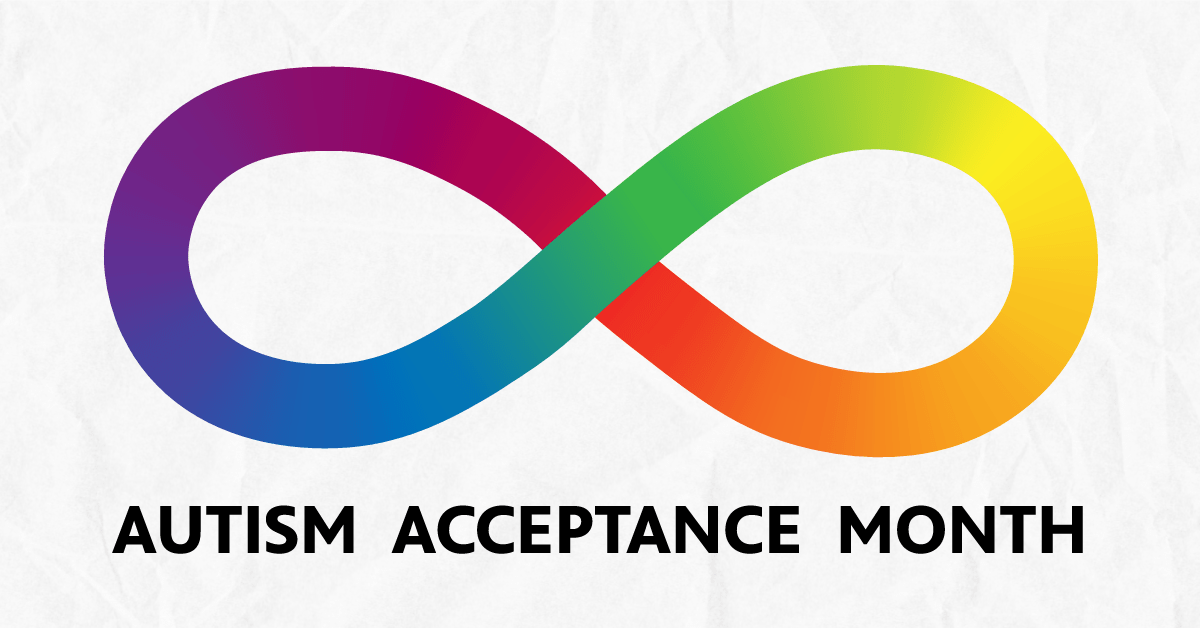Dental care is vital for everyone, including individuals with autism spectrum disorder (ASD). However, dental visits can be overwhelming for autistic patients due to sensory sensitivities or sensory processing disorder. As dental practitioners, it’s essential to recognize these challenges and implement strategies to make the dental experience more accessible and comfortable for individuals with autism.
In our second article as part of Autism Acceptance Month, we dive into how to make your dental practice accessible and welcoming for people all along the neurodivergent spectrum (and to read more about these topics, click here!)

Understanding Sensory Processing Disorder
Neurodivergence refers to variations in neurological structure and function, including conditions such as autism spectrum disorder (ASD) and sensory processing disorder (SPD). Understanding sensory sensitivity is crucial for creating a more inclusive society, especially for those who are neurodivergent. Sensory sensitivity is a common feature of neurodivergent individuals, impacting how they perceive and react to sensory stimuli in their environment.
Neurodivergent individuals may experience sensory sensitivity differently from neurotypical individuals. For example, they may be hypersensitive to certain stimuli, such as bright lights, loud noises, strong smells, and tactile sensations. Conversely, they may also be hyposensitive, meaning they have a reduced sensitivity to sensory input and may seek out intense sensory experiences.
By understanding neurodivergence and sensory sensitivity, society can become more inclusive by accommodating the diverse sensory needs of individuals. This includes creating environments that are sensory-friendly and reducing sensory overload in public spaces such as schools, workplaces, and healthcare facilities.
In healthcare settings, understanding sensory sensitivity is essential for providing quality care to neurodivergent individuals. Healthcare providers can use sensory-friendly approaches during medical procedures and appointments, such as providing visual supports, offering choices, and respecting sensory boundaries. By tailoring care to the individual sensory needs of patients, healthcare professionals can improve patient experiences and outcomes.
Understanding sensory sensitivity and neurodivergence is key to creating a more inclusive society where all individuals, regardless of their sensory differences, feel valued and supported. By embracing neurodiversity and adapting environments to accommodate diverse sensory needs, we can foster greater acceptance, accessibility, and inclusion for everyone.

Autism is a neurodevelopmental condition that affects how a person perceives and interacts with the world around them. Sensory sensitivities are common among individuals with autism, making them more sensitive to sights, sounds, smells, and textures. These sensitivities can lead to anxiety and discomfort, especially in unfamiliar environments like the dentist’s office.
Sensory Challenges at the Dentist’s Office
The dentist’s office can be overwhelming for autistic patients due to sensory challenges. Bright lights, loud noises, and strong smells can trigger anxiety and discomfort. The sensation of dental instruments in the mouth and the taste of dental materials can also be distressing. These sensory stimuli can make it difficult for autistic individuals to tolerate dental visits, leading to avoidance of essential oral care.
Sensory challenges at the dentist’s office can stem from hypersensitivity to sensory input. Autistic individuals may be more sensitive to sights, sounds, smells, and textures than neurotypical individuals. The bright lights commonly used in dental offices can be glaring for someone with sensory sensitivity. Similarly, the noise of dental drills and suction devices can be deafening for those who are hypersensitive to auditory stimuli.

Strong smells, such as disinfectants and dental materials, can be overwhelming for autistic patients with olfactory sensitivities. The combination of these sensory challenges can create a perfect storm of discomfort and anxiety, making dental visits a daunting experience for individuals with autism spectrum disorder.
Moreover, the sensory experiences associated with dental visits can trigger sensory aversions, leading to avoidance behaviors. Autistic individuals may become resistant to dental care due to the distressing sensory stimuli they encounter at the dentist’s office. This avoidance can have detrimental effects on their oral health, potentially leading to dental issues and exacerbating existing problems.
Recognizing and addressing challenges for those with sensory processing disorder is essential for making dental visits more accessible for autistic patients. By understanding the impact of sensory sensitivity and implementing sensory-friendly practices, dental practitioners can create a more inclusive environment that accommodates the needs of individuals with autism spectrum disorder.
Strategies for Creating an Autism-Friendly Dental Experience
Sensory-Friendly Environment: Create a calming atmosphere in the dental office by dimming lights, using soothing colors for décor, and playing soft music. Minimize unnecessary noise and eliminate strong smells that may be distressing for autistic patients. For more ideas about dental practice design and how to implement colors and design features, check out our series from Emily Pieshefski, an interior designer with Benco’s practice design team.
Communication and Preparation: Communication is key when working with autistic patients. Prepare them for the dental visit by providing visual schedules and social stories to help them understand what to expect. Use clear, simple language to explain procedures and give them ample time to ask questions and express concerns.
Sensory-Friendly Tools: Utilize sensory-friendly tools and equipment to make the dental experience more comfortable. Offer weighted blankets or lap pads to provide a sense of security, and provide noise-canceling headphones or earplugs to reduce auditory stimuli. Allow patients to bring their preferred sensory items, such as fidget toys or chewable necklaces, to help them self-regulate during the appointment.
Desensitization Techniques: Gradually introduce autistic patients to dental procedures through desensitization techniques. Start with short, low-pressure visits to familiarize them with the dental environment and gradually increase the length and complexity of appointments as they become more comfortable.
Choice and Control: Empower autistic patients by giving them choices and control over their dental care whenever possible. Let them choose their preferred seating arrangement, toothpaste flavors, and the order of procedures. Providing options can help alleviate anxiety and foster a sense of autonomy.
Sensory-Friendly Dental Materials: Choose dental materials that are less likely to trigger sensory aversions. Offer flavored fluoride varnishes and toothpaste options to accommodate different sensory preferences. Use gentle, non-abrasive tools and consider alternative methods for anesthesia administration, such as numbing gels (which can also be flavored!) or distraction techniques. It is often the best choice to allow parents to sit next to their autistic children during visits in order to offer reassurance and distracting conversation.
Patient-Centered Care: Tailor dental care plans to meet the individual needs of autistic patients. Take into account their sensory sensitivities, communication preferences, and any specific accommodations they may require. Collaborate with caregivers and autism specialists to develop personalized strategies for optimal dental care.

The Future of Accessible Operatories
Creating an autism-friendly dental experience requires understanding and addressing the sensory sensitivities of autistic patients. By implementing sensory-friendly practices and personalized accommodations, dental practitioners can create a welcoming and inclusive environment that ensures all patients receive the care they need and deserve.
Advancing technology provides new opportunities for reducing the sensory overload and creating a more tranquil experience for all people along the neurodivergent spectrum. Benco Dental can help you navigate the world of the latest innovations in dentistry and, specifically, what tools you can access to make a more accessible practice for your patients with sensory sensitives.
Together, we can continue making dental visits a more positive experience for our autistic patients.


